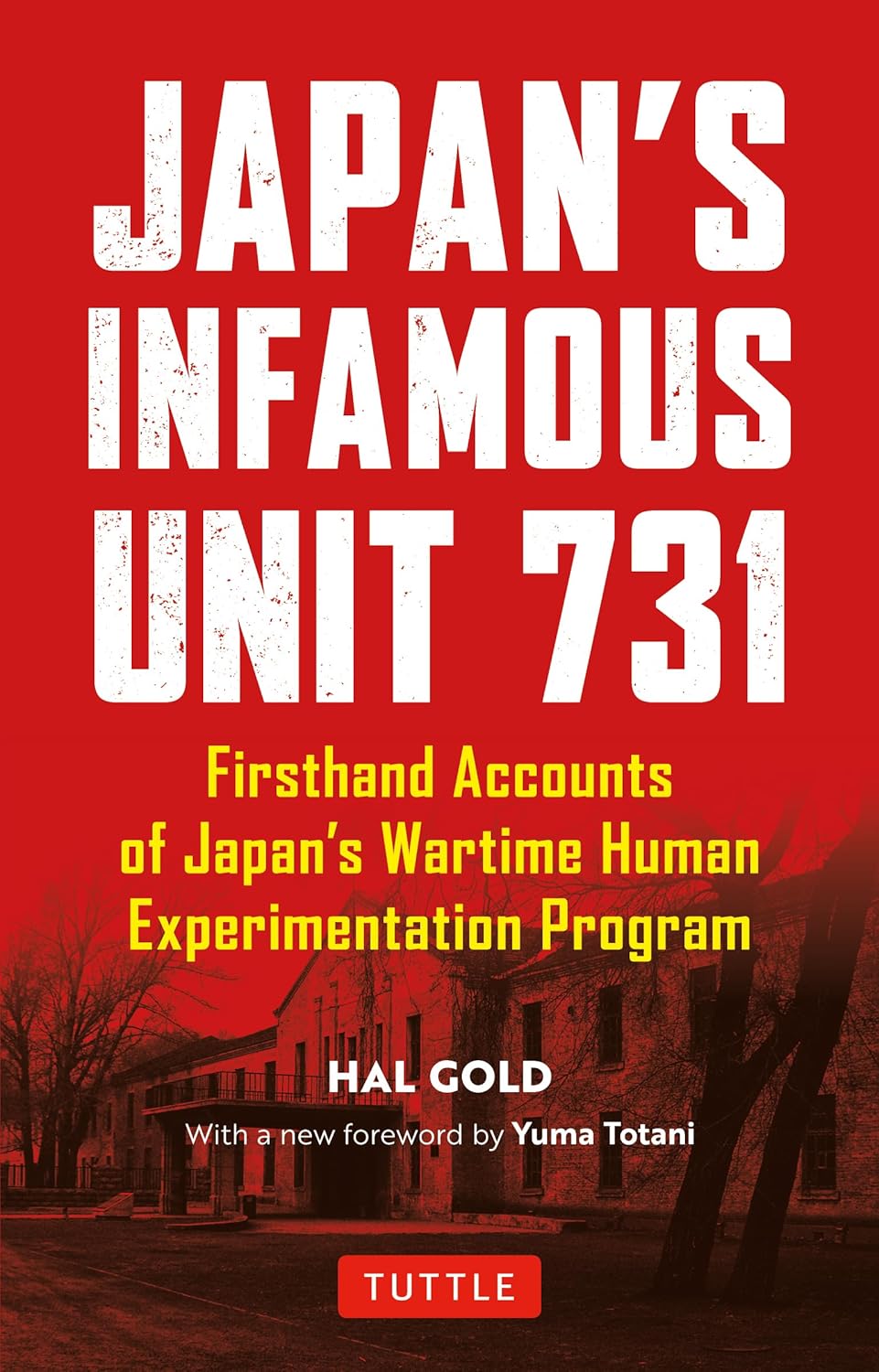About this deal
RARE) Yoshimura Hisato (excerpt of a telephone interview conducted by Mainichi Shimbun)". Vimeo. Archived from the original on 2021-10-07 . Retrieved 2021-10-07. Japan guilty of germ warfare against thousands of Chinese". the Guardian. 2002-08-28 . Retrieved 2023-01-03. Names of 3,607 members of Imperial Japanese Army's notorious Unit 731 released by national archives". The Japan Times. April 16, 2018. Archived from the original on April 18, 2018 . Retrieved April 17, 2018.
Drea, Edward (2006). Researching Japanese War Crimes (PDF). National Archives and Records Administration for the Nazi Warcrimes and Japanese Imperial Government Records Interagency Working Group. p.35. Through Gobi and Khingan [ ru] (1981); Coproduction of USSR, Mongolia, Eastern Germany. Miniseries (two episodes). a b Morimura, Seiichi (1984). Zu Binghe translation of Ogre's Cave: terrible inside story of the bacteriological warfare unit from Japan's Kwantung Army. Beijing: Qunzhong Chubanshe. pp.108–109. I unhesitatingly assert that the greatest conquest of Japan has been in the humanities of war, in the stopping of the needless sacrifice of life through preventable disease. Japan is the first country in the world to recognize that the greatest enemy in war is not the opposing army, but a foe more treacherous and dangerous—preventable disease, as found lurking in every camp—whose fatalities in every great war of history have numbered from four to twenty times as many as those of mines, bullets, and shells.
Get the RNZ app
Biohazard: Unit 731 and the American Cover-Up" (PDF). p.5. Archived from the original (PDF) on 2019-07-31 . Retrieved 2019-05-31. The Truth of Unit 731: Elite medical students and human experiments on YouTube, a documentary by NHK (2017) Unit731 had branches in Linkou (Branch162), Mudanjiang, Hailin (Branch643), Sunwu (Branch673), Toan, and Hailar (Branch543). [3] :60,84,124,310 Tokyo Some of the tests have been described as "psychopathically sadistic, with no conceivable military application." For example, one experiment documented the time it took for three-day-old babies to freeze to death. [60] [61]
a b Barenblatt, Daniel. A Plague Upon Humanity: the Secret Genocide of Axis Japan's Germ Warfare Operation, HarperCollins, 2004. ISBN 0060186259.Harris, S.H. (2002) Factories of Death. Japanese Biological Warfare, 1932–1945, and the American Cover-up, revised ed. Routledge, New York.
Reportedly, not one of the thousands of prisoners that were experimented on — most of whom were Chinese, though many were Russian or Korean — survived. Fortunately for the Russians, this type of typhoid germ became ineffective almost immediately after hitting the water. The contamination was probably initiated more for the publicity than anything else, as Ishii likely knew it would not work. reddened, swollen. Covered with millet-seed-size to bean-size blisters. Eyelids and conjunctivae hyperemic and edematous. Had difficulties opening the eyes. Grunden, Walter E., Secret Weapons & World War II: Japan in the Shadow of Big Science, University Press of Kansas, 2005. ISBN 0700613838.Nozaki, Yoshiko (2000). Textbook controversy and the production of public truth: Japanese education, nationalism, and Saburo Ienaga's court challenges. University of Wisconsin–Madison. pp.300, 381. The judge’s comment was, however, consistent with much of the narrative written about Unit 731 after the war, which generally characterizes the group’s activities as “experimental,” a seeming reference to the vivisections conducted by the Japanese doctors. Dongju: The Portrait of a Poet (2016), South Korea, directed by Lee Junik, depicts dead poet Yoon Dong-ju Later, the Japanese took especially virulent forms of the plague and other pathogens that were developed at Unit 731, put them in canisters and dropped them on nearby towns to see if their weapons would work. They did.
Harris, Robert and Paxman, Jeremy. A Higher Form of Killing: The Secret History of Chemical and Biological Warfare, Random House, 2002. ISBN 0812966538. Materials on the Trial of Former Servicemen of the Japanese Army Charged With Manufacturing and Employing Bacteriological Weapons. Moscow: Foreign Languages Publishing House. 1950. pp.349, 450. Less well known are the experiments that Japan performed on adult male Chinese prisoners of war and political prisoners, as well as women and children. The captives were injected with diseases such as cholera and gonorrhea, or chained to stakes while aircraft dropped plague bombs. a b "CIA Special Collection ISHII, SHIRO_0005" (PDF). Archived from the original (PDF) on 2020-08-09 . Retrieved 2019-09-18. Japan started its biological weapons program in the 1930s, partly because the use of biological weapons was banned in interstate conflicts by the Geneva Protocol of 1925; they reasoned that the ban verified its effectiveness as a weapon. [1] Japan's occupation of Manchuria began in 1931 after the Japanese invasion of Manchuria. [11] Japan decided to build Unit 731 in Manchuria because the occupation not only gave the Japanese an advantage of separating the research station from their island, but also gave them access to as many Chinese individuals as they wanted for use as test subjects. [11] They viewed the Chinese as no-cost assets, and hoped this would give them a competitive advantage in biological warfare. [11] Not all test subjects were Chinese, with many other nationalities being included too. [1]
While Unit731 researchers arrested by Soviet forces were tried at the December1949 Khabarovsk war crimes trials, those captured by the United States were secretly given immunity in exchange for the data gathered during their human experiments. [6] The United States helped cover up the human experimentations and handed stipends to the perpetrators. [1] The Americans co-opted the researchers' bioweapons information and experience for use in their own biological warfare program, much like what had been done with Nazi German researchers in Operation Paperclip. [7] [8]
 Great Deal
Great Deal 